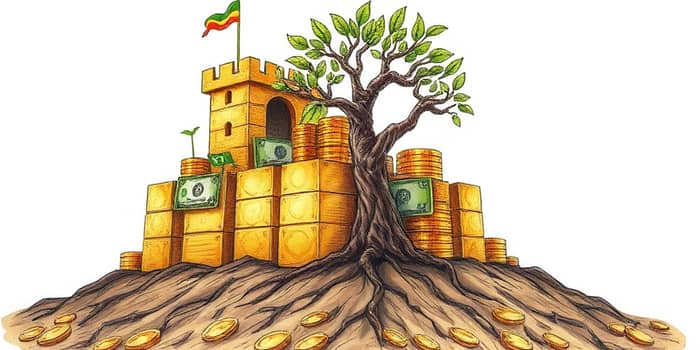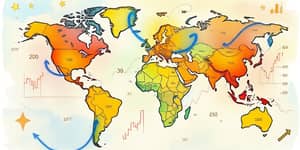In a world where uncertainty can strike at any moment, having a well-crafted emergency investment plan is more than just prudent—it’s essential. Life’s unexpected twists, from sudden medical bills to unexpected job loss, can derail even the most careful financial strategies. This guide will walk you through every step of building a robust fund that serves as your financial safety net.
By the end of this article, you will have a clear roadmap for creating, growing, and maintaining an emergency fund that not only protects you in times of crisis but also empowers you to pursue long-term goals with confidence.
Understanding Emergency Funds
An emergency fund is a dedicated cash reserve set aside specifically for unplanned expenses or financial shocks. It acts as a financial shock absorber, ensuring you don’t have to rely on high-interest debt or disrupt your long-term investments when life throws you a curveball.
Beyond just covering unexpected costs, a well-funded emergency cushion offers lasting peace of mind during turbulent times. The psychological benefit of knowing you can handle a setback without derailing your finances cannot be overstated.
Recommended Emergency Fund Size
Financial experts typically suggest saving between three to six months’ worth of household expenses. According to recent data, the average U.S. household spends about $6,440 per month, so a fully funded emergency fund would range from $19,320 to $38,640.
For many, aiming straight for six months can feel daunting. Start with a smaller target—perhaps one month’s essential expenses—and gradually build from there. Each milestone fuels motivation and brings you closer to financial serenity.
Key Components of Your Plan
A truly robust emergency investment plan rests on three pillars: liquidity, protection, and growth potential. Balancing these elements ensures you can access funds quickly, shield yourself from major losses, and steadily build wealth once your reserve is secure.
- immediate cash for urgent situations
- comprehensive insurance and risk protection
- long-term growth through diversified assets
Strategies for Building Your Emergency Fund
Breaking down your ultimate goal into digestible steps is the cornerstone of success. Begin by calculating your essential monthly expenses—rent, utilities, groceries, transportation, and insurance—and use that figure as your baseline. Setting a clear, quantifiable target transforms an abstract goal into a powerful motivator.
Next, cultivate a consistent saving habit. Automate contributions to your fund each payday, even if it’s a modest amount. Over time, these contributions accumulate, and the discipline of regular saving becomes second nature.
Tracking progress is vital. Use a simple spreadsheet or budgeting app to log each deposit and celebrate small victories along the way. Every additional dollar brings you closer to financial security when life takes a turn.
Practical Steps to Start Saving
Getting started often feels like the hardest part. These actionable steps will set you on the right path immediately:
- calculate your after-tax income precisely by reviewing pay stubs and deductions
- choose a budgeting framework that suits you using apps or manual ledgers
- track expenses with discipline every week to identify saving opportunities
- automate transfers on payday each month for consistent contributions
- review and adjust your budget quarterly for continued improvement
Types of Expenses to Cover
Your emergency fund should primarily cover non-discretionary costs—those you can’t postpone without severe consequences. By focusing on the essentials first, you guarantee that crises won’t push you into high-interest borrowing or force you to liquidate long-term investments prematurely.
- Rent or mortgage payments
- Utilities and essential household bills
- Groceries and basic food supplies
- Reliable transportation and fuel
- Medical and prescription expenses
Where to Keep Your Emergency Fund
Liquidity is paramount. Place your emergency savings in a high-yield savings account or a money market account where funds are accessible within days, if not hours. Avoid tying this money up in long-term investments or accounts with withdrawal penalties.
Keeping your emergency fund in a separate account from your daily checking reduces the temptation to dip into it for non-essential spending. This clear separation supports your commitment to maintaining the fund’s integrity against financial setbacks during crisis moments.
Special Considerations
Not everyone can follow a one-size-fits-all plan. If your cash flow is limited, prioritize improving your income-to-expense ratio by trimming discretionary spending or negotiating bills. Allocating a portion of tax refunds or bonuses to your emergency fund can also create significant leaps in savings.
For those with variable income—freelancers, gig workers, or commission-based roles—aim for the upper end of the savings spectrum. During high-earning months, increase contributions to build a more substantial buffer that carries you through leaner times.
Maintaining and Growing Your Plan
Once you reach your target fund size, don’t let it stagnate. Conduct quarterly reviews to ensure your savings still align with your evolving lifestyle and expenses. Life events such as marriage, parenthood, or homeownership often necessitate recalibrating your goals.
After stabilizing your emergency cushion, consider channeling additional savings into long-term investment vehicles like index funds or retirement accounts. This dual focus on safety and growth accelerates wealth building while preserving your protective buffer.
Conclusion
Building a robust emergency investment plan is a journey, not a sprint. Each step you take—from setting achievable milestones to automating contributions—brings you closer to a state of unwavering financial resilience. The peace of mind that comes from knowing you can weather life’s storms is priceless.
Start today. Even the smallest contribution counts toward your ultimate goal of financial freedom and security. With discipline, foresight, and the strategies outlined above, you can transform uncertainty into confidence and ensure that you—and your loved ones—are protected no matter what comes your way.
References
- https://www.consumerfinance.gov/an-essential-guide-to-building-an-emergency-fund/
- https://www.investopedia.com/personal-finance/how-to-build-emergency-fund/
- https://www.securian.com/insights-tools/articles/5-steps-to-building-an-emergency-fund.html
- https://rgwealth.com/insights/emergency-fund-basics/
- https://www.fidelity.com/learning-center/trading-investing/emergency-protection-growth
- https://www.nerdwallet.com/article/finance/how-to-budget
- https://www.irs.gov/instructions/i990










